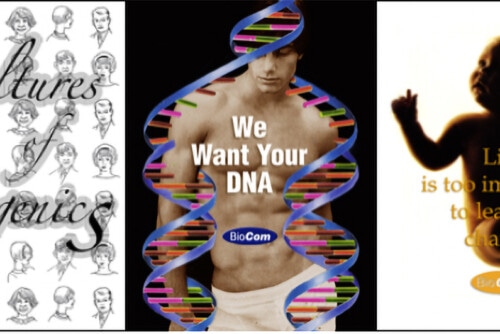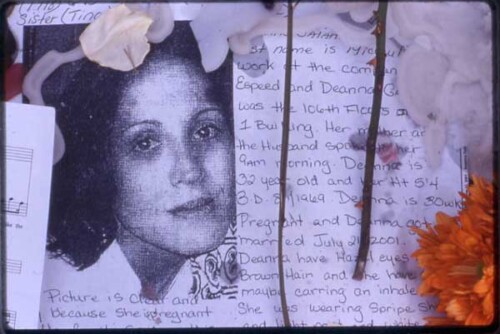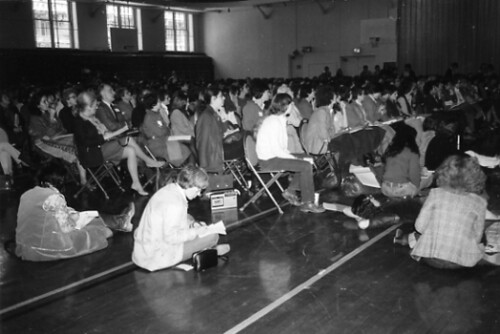How does racialization take shape in this scenario? Let me begin with two brief personal stories. Here is the first:
In an Introduction to Women’s Studies course, the students and I were discussing race. I told the students that I made no assumptions about how they identified themselves racially or culturally, and that I certainly did not assume that I could know this by looking at them. In the course of the ensuing discussion, a student said something like: “I’m white. I was adopted from Korea. But I’m white. I’m white!”
The second story goes like this:
At a meeting for a queer Latino/a organization, I introduced myself to one of the co-chairs. In the course of our discussion, she told me that her parents were white and U.S.-born, and that they adopted her and her brother as babies from Colombia. She went on to say that her parents frequently took her to Colombia throughout her childhood, and that she now went “back home” to Colombia frequently on her own.
These two stories involve young women of roughly the same age, adopted as infants by U.S. families at approximately the same time (the early 1990s). They speak to two ends of the spectrum of the available approaches to race in the recent U.S history of trans-racial adoption practice, namely assimilation (in the first story) and immersion (in the second). In between these two poles lie two other options, “celebrating plurality,” and “balancing act” (of two cultures). 1
All of these approaches involve processes of re-racialization. The child is initially racialized according to a notion of race as a natural substance that is passed from birth mother and father to child, but this substance is seen as largely incidental. In the first story—in the assimilation model—the adoptee’s race does not carry any significance beyond the “fact” itself. Consequently, it becomes possible for the adoptee to simply blend into white culture, to be assimilated into whiteness. It is not so much that the adoptee is not seen as being “of” a different race, but rather that in the assimilation model there is no substantial discourse of race in the process of adoption and parenting. The “unmarked” category of whiteness therefore has free rein to do its work. Like my student adopted from Korea, the adoptee is raised in a white family, more often than not in a predominantly white neighborhood, and becomes white through the everyday technologies of childhood that are also technologies of race, or in this case, of whiteness: books, toys, games, media, school curriculum, and everyday interactions in which the entire conceptual and visual field assumes whiteness without ever having to name it as such.
It’s hardly surprising, given this process, that my student sees herself—and legitimately so—as white, and insists upon this while also knowing that she is likely to be challenged in this claim. In fact, perhaps the only way in which my student is different from her neighborhood peers is that she actually identifies explicitly as white. She does not have the luxury of simply being white in the same way; she must claim, and in that sense negotiate her whiteness, and race in general. In other words, she identifies as white, but she does not enjoy all of the privileges of whiteness: she must invoke her whiteness.
It is important to note that this might be a far more difficult process for a black or Latino child than for my student adopted from Korea, given the hierarchies of race and racism at work in the U.S. 2 In her incisive work on trans-national adoption, Sarah Dorow has argued that within the black-white U.S. economy of race, Asianness becomes a kind of flexible category of race, edging toward or even classifying as whiteness when juxtaposed against blackness. 3 This flexibility makes it possible to racialize Asian adoptees as white-enough, or as palatably non-white Asian. Addressing the intersectionality of race and gender in the case of Chinese adoptees, who are primarily female, David Eng has further suggested that “the racial management of gender and the gendered management of race” that “assimilate the Asian adoptee into the intimate public sphere of the white nuclear family” are bound up with the model minority myth 4, making Asian children more desirable than their non-white counterparts. Clearly, both the adoptees’ and the families’ choice of racialization is highly circumscribed by these broader economies of race.
- Sarah Dorow, Transnational Adoption: A Cultural Economy of Race (New York: New York University Press, 2006): 216.[↑]
- However, the phenomenon of black and other non-white children claiming that they are white or expressing the desire to be white is (or at least was at one time) not unusual. I think here of Whoopi Goldberg’s famous sketch where she plays a nine-year-old black girl who bathes in Clorox and covers her head with a white skirt, wishing to become white with long, beautiful flowing hair.[↑]
- Sarah Dorow, “Racialized Choices: Chinese Adoption and the ‘White Noise’ of Blackness,” Critical Sociology 32.2-3 (2006): 357-379.[↑]
- David Eng, “Transnational Adoption and Queer Diasporas,” Social Text 76 (2003): 12. [↑]


